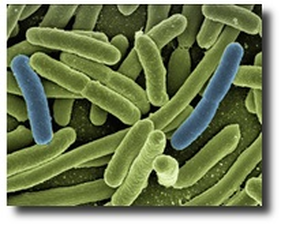Do mutations create new information?
|
We are told very confidently that evolution is a fact, like apples falling off of trees. It is also claimed that if you don’t believe in evolution, you are insane. Now, as usual, it is very important at this point to define what I mean by “evolution”. I am not simply referring to “change”. We see change all the time, but it’s not the kind of change necessary to produce “molecules-to-man” evolution, which is what is taught in our public schools and state universities (and even many Christian schools and universities, unfortunately).
|
|
If you believe in evolution and therefore believe single-cell organisms were transformed into every other life form on this planet, including mankind, TONS of new information must have been created along the way. Even though single-cell organisms are very complex, they are much simpler and contain much, much less information than human beings.
So where does this additional information come from? I asked someone recently if they could think of any examples of information that could not be traced back to an intelligent source. They thought for a while and finally said, “No.” I then asked where all the information came from that we find in DNA. He wasn’t sure what I meant by “information in DNA,” so I explained how human DNA (as an example) contains extremely complex instructions for building an entire person! Can we reasonably conclude those complex instructions arose by natural, non-directed processes of nature? He admitted it didn’t make much sense to hold that belief. So back to our original question… do mutations create new information? Evolutionists believe they do, as evidenced by the following quote: “Mutations are essential to evolution; they are the raw material of genetic variation. Without mutation, evolution could not occur.” (Understanding Evolution, University of California-Berkeley) We also need to define what we mean by “mutation”. In laymen’s terms, when life forms reproduce, they have to make a copy of their DNA and pass it on to their offspring. A mutation, generally speaking, is an accidental copying error that occurs during this process. (There are times when some changes are actually triggered by environmental factors, but these are evidence of superb design and certainly not the result of non-directed evolutionary processes.) In an attempt to keep this brief article as simple as possible, an argument can be made that in some extremely rare occasions, very small amounts of “new” information are theoretically possible. I won’t go into detail on this at this point, but this is what evolutionists take comfort in and rely very heavily upon. Let’s take this as a given for now. Does this actually provide a solution as to how molecules-to-man evolution is possible? Not at all and here’s why. The reason can be described as “the waiting time problem” ̶ a phrase gleaned from a technical paper co-authored by Dr. John Sanford (Cornell University) and Dr. John Baumgardner (Liberty University, formerly Los Alamos National Laboratory) along with 2 other scientists. Dr. Sanford, in addition to being famous for inventing the “gene gun”, founded “Logos Research Associates”, a consortium of some of the world’s leading scientists who are also very committed Christians and creationists. Dr. Baumgardner is also on the Board of Directors of this group and has developed the world’s best 3-D computer simulation of plate tectonics! I have been honored to also serve on the Board of Directors with this group for the past 5 years or so. So, what’s the “waiting time problem”? Simply put, even if you grant that mutations could somehow create new information on a very rare occasion, how long would you have to wait before mutations created an additional new piece of related information that could combine with the first piece, building towards something useful? Using a “genetic accounting” system, called “Mendel’s Accountant” (developed by 5 scientists, including Dr. Sanford and Dr. Baumgardner), a simulation of the mutational process was constructed and analyzed. The results were very significant. One quick side note. Computer simulation models, including this one, always involve numerous “variables” that need to be input in order to yield useable output and conduct a reasonable analysis. It can be fairly easy to choose values for these variables that produce the output you might “hope to get”. In other words, you can “fudge” things in order to make the end results be just about anything you want. The scientists who authored the technical paper referenced in this article made a concerted effort to be as fair to evolutionary beliefs as possible, being much more generous than might be deemed reasonable, but did so, in order to make sure they weren’t biased towards achieving results implying an intelligent design scenario.
Since its publication, the “waiting time” technical paper has had over 10,000 reviews without a single challenge! That speaks volumes!
Wrapping this up, even given the potential ability to produce small, very rare pieces of new information, mutations will never produce “molecules-to-man” evolution. Without a mechanism to generate huge volumes of useful information, evolution is dead before it even begins. In the meantime, if you have any questions about this or any other issue, please don’t hesitate to contact us!
To print a copy, view PDF file. |



